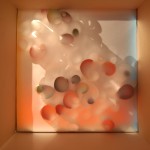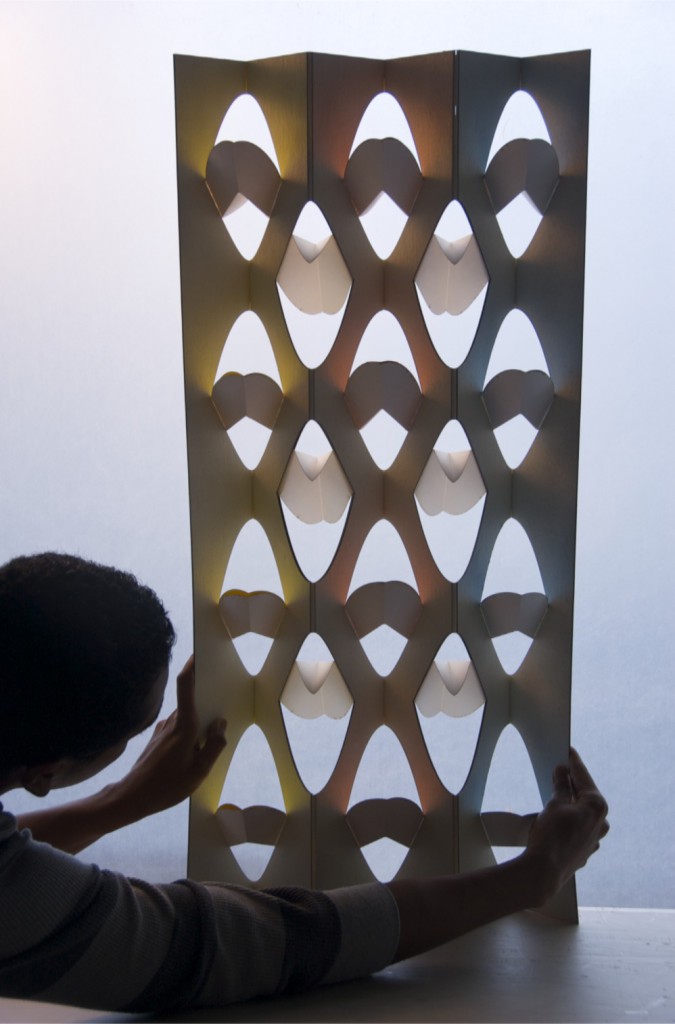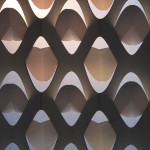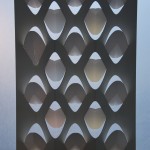How can a room change character? RheinMain students in Wiesbaden Germany were given a challenge to create a facade that would harness the sun’s movement to change the atmosphere of a cubic room’s interior. Students were first experimented with creating shadows with found objects before designing and refining light-modulating facades. To simulate the change of the seasons, we used green paper for summer grass, orange paper for autumn leaves and white paper for winter snow.
From the studies below, we found that color on vertical surfaces perpendicular to a facade can activate a space as the sun moves through the sky. The circles located away from the translucent surface cast more fuzzy, mysterious shadows, in contrast to the sharp shapes in contact with the surface.
- Back of Morgane Coquin’s panel shows colored curls of paper.
- Front scrim shows mysterious objects – Autumn morning
- Sharp Autumn noon light accentuates shadows.
- Autumn afternoon light
- Spring afternoon light shows cool green glow
- Back of Willi Wagner’s panel shows color highlights
- Front of Willi Wagner’s backlit panel with color glow.
- Frank Moritz used bold Bauhaus colors to shape this Winter noon image.
- Warm colors come from Autumn fall leaves at noon by Frank Moritz

Convex white surfaces catch reflections of green according to the strength of the incident light in this facade by Sacha Lehnhardt
Scale matters. As seen above, the grand curve can set small motifs at different angles to the sun, allowing a rich variety with a repetitive motif. The smaller detail can humanize the space and enriches the sensory experience with secondary visual effects.
The Bounced Color explorations started with using orange, yellow, and blue paper to reflect color from the petals onto the screen. The value of the material is critical: blue material does not reflect color nearly as well as orange or yellow. The angle of the colored surface needs to be considered: color added to the petals reflected much more color than adding color to the frame. Filling the back of the petals with 1/2 yellow and 1/2 orange paper gave a beautiful effect of a color gradient that was much softer than the pure colors.


























You must be logged in to post a comment.